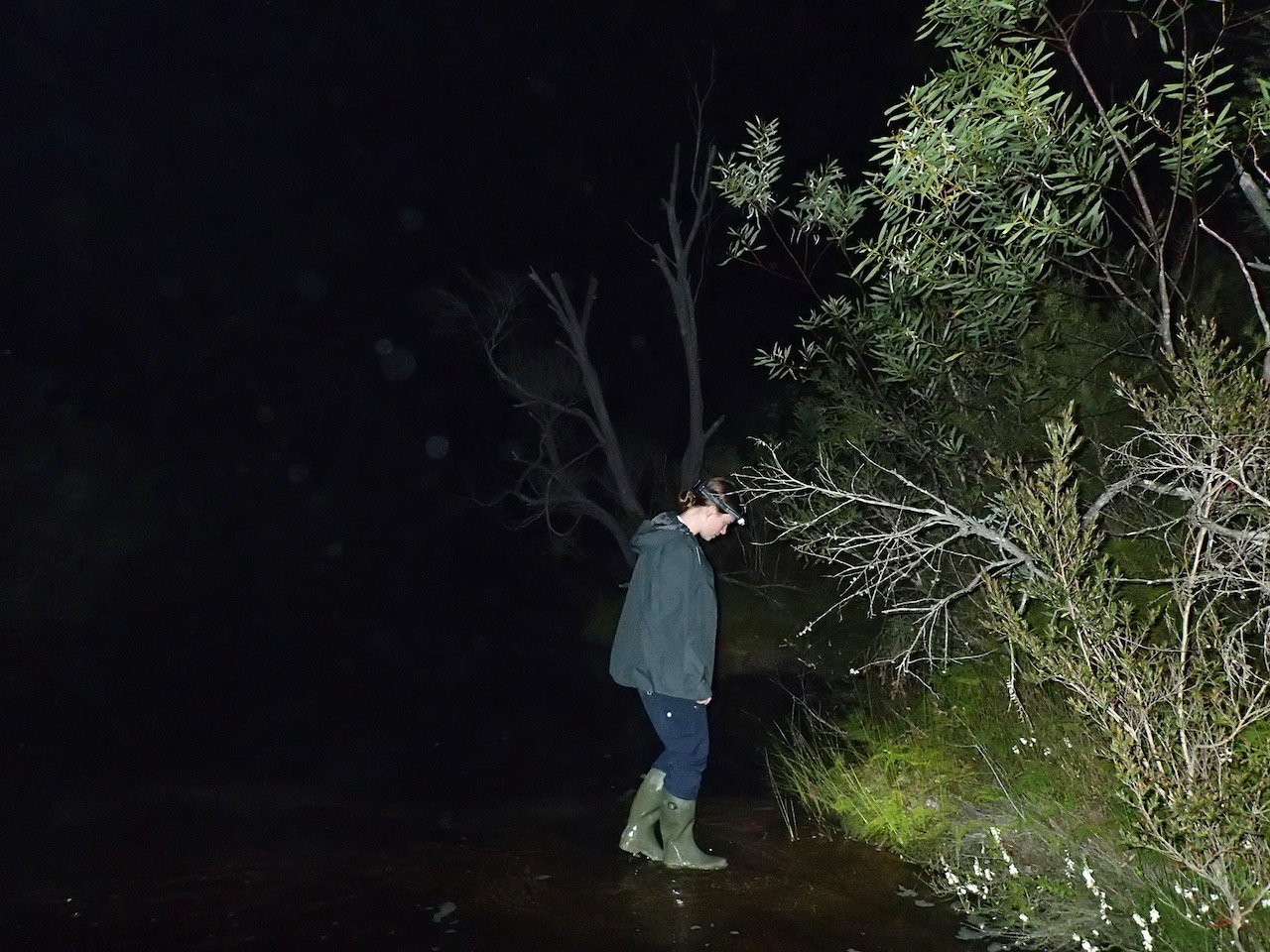Does the Blue Mountains Tree Frog have really bad neighbours?
Neighbourly feuds are a universal problem – but for The Blue Mountains Tree Frog, could the other frog species they share a stream with, be deadly?

The Blue Mountains Tree Frog (Litoria citropa) in amplexus.
Image: Jodi Rowley© Australian Museum
This year has a been a challenging one with the global pandemic, but diseases aren’t just impacting humans. Our biodiversity has been battling devastating diseases for decades and amphibians are one of the most affected groups. A single disease, chytridiomycosis, has so far left hundreds of amphibian species around the world extinct and even more threatened and some of these species are rather close to home.
The disease chytridiomycosis is caused by the amphibian chytrid fungus (Batrachochytrium dendrobatidis), or Bd for short. Bd infects the keratinised skin layers of adult frogs and mouthparts of tadpoles. This pathogen was only discovered a few decades ago, yet has been detected on every continent except Antarctica (as there are no frogs there). In Australia, at least four frog species are now thought to be extinct due to Bd, with many more species devasted due to the disease, including the well-known Southern Corroboree Frog (Pseudophryne corroboree).

A female Stony Creek Frog (Litoria lesueuri).
Image: Jordann Crawford-Ash© Australian Museum
Strangely, there appears to be species that are rather unaffected by Bd, despite often being infected by it. These species are called reservoir species, becoming a safe haven for the pathogen and potentially spreading it around their neighbourhood (their stream or pond) and to the other, more susceptible species that live there.
While there has been extensive research on Bd, there are still many Australian frog species that have not been tested for the pathogen. We simply don’t know how much of a threat this pathogen is to most of our frog species, and which frog species are the ‘bad neighbours’ posing a particular risk to some of our rare or threatened frog species.

Surveying for frogs at our study site in Southern Sydney
Image: Jodi Rowley© Australian Museum
We surveyed two streams in southern Sydney, with a focus on three species: two potential bad neighbours (or reservoir species), the Common Eastern Froglet (Crinia signifera) and the Stony Creek Frog (Litoria lesueuri), and the Blue Mountains Tree Frog (Litoria citropa). The latter is a beautiful species found from the Hunter River in NSW to north-eastern Victoria, but has now disappeared from some areas, and may be very susceptible to Bd.
When we found frogs of our three focus species, we tested them for Bd. Testing frogs for Bd involves a swab, similar to a COVID-19 test; however, instead of swabbing their nose and throat, we gently swab their feet, legs and belly. Each swab is then taken back to the Australian Museum and processed in our DNA lab.

Swabbing the Common Eastern Froglet (Crinia signifera) for the amphibian chytrid fungus (Batrachochytrium dendrobatidis)
Image: Jordann Crawford-Ash© Australian Museum
Over 7 months we managed to swab a total of 152 frogs. After many hours of pipetting, we were thrilled to see that the number of frogs infected was not particularly high, even in the two species we were worried about being reservoir species. Although more investigation is needed, our potentially bad neighbours, the Common Eastern Froglet and the Eastern Stony Creek Frog didn’t seem to be dramatically contributing to the spread of the disease in this location as we feared - so no eviction notice needed for now!
Unfortunately, we did find infected Blue Mountains Tree Frogs. The good news is that there were relatively few frogs infected and at relatively moderate infection intensities. This was a relief; however, we only studied frogs at one site, so more research is needed throughout their range to understand just how susceptible the Blue Mountains Tree Frog is to Bd.

The Blue Mountains Tree Frog (Litoria citropa) after being swabbed.
Image: Jordann Crawford-Ash© Jordann Crawford-Ash
More work is needed to better understand the impact of disease on Australia’s frogs. Our findings highlight how dangerous it can be to make assumptions based upon studies from other areas, at different times and with different species. We need local studies to inform local conservation. Just because a frog species is a bad neighbour in one neighbourhood, it doesn’t necessarily mean that it will be in another!
Jordann Crawford-Ash
Herpetology, Australian Museum Research Institute
Acknowledgements
A warm thank you to Rowena Morris from the Illawarra Parks and Wildlife office for supporting this research and allowing us to survey in Dharawal National Park and the Frog and Tadpole Study Group for awarding us their student research grant. We also thank Chris Portway for his guidance (and patience) with lab procedures, and all our excellent volunteers; Tim Cutajar, Kathy Potter, Stephen Mahony, Simon Crawford-Ash and Mitchell Hodgson.
More information
Crawford-Ash, J., & Rowley, J. J. L. (2021) Bad neighbours? Dynamics of amphibian chytrid fungus Batrachochytrium dendrobatidis infection in three co-occurring frog species of southern Sydney. Diseases of Aquatic Organisms. 143:101-108.

